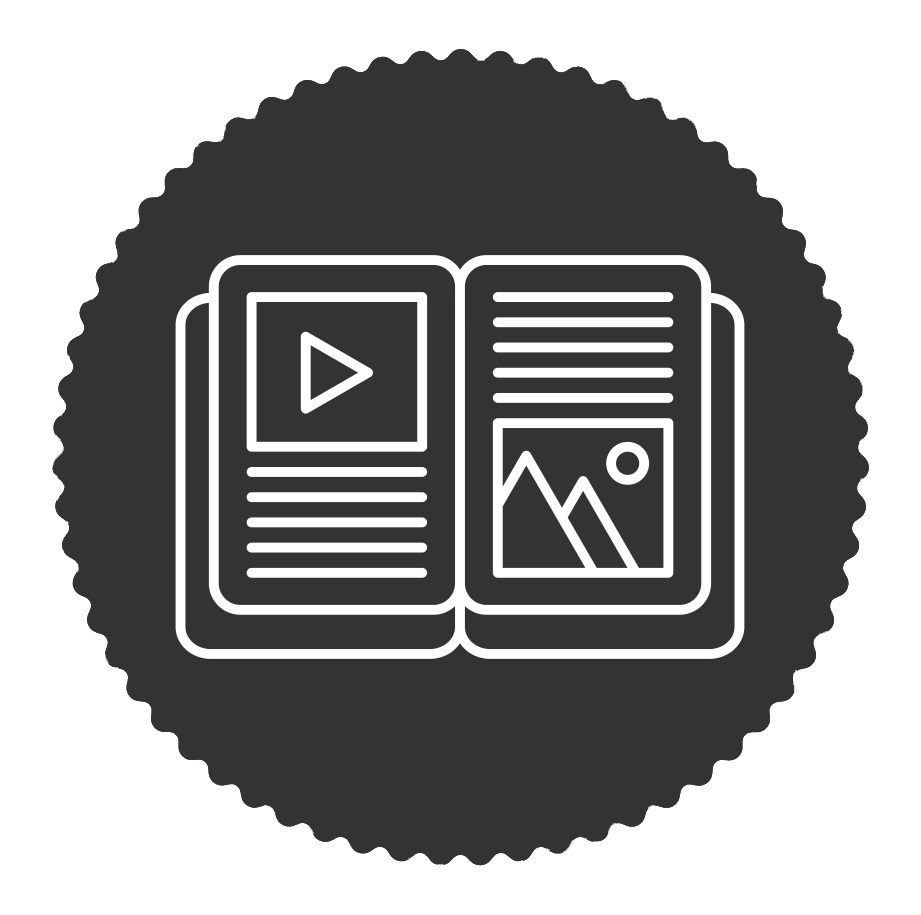Project
The Digital Liquidity ProjectGoal: Study of flow and value of information in the Digital Age, what influences and affects it to develop actionable insights that can be leveraged in our work.
Intro
Understanding the nature of information in the Digital Age is critical to success. The Digital Liquidity Project seeks to do just that.
Information is at the epicenter of the global economy. Its role in everyday life and work is becoming more important, more volatile, and more quickly commoditized than ever before. Those who can map the currents and flow of information, stand to better navigate it, and develop an edge over those lost in the noise and chaos.
The Digital Liquidity Project is focused on the study of flow and value of information in the Digital Age. Heroik takes a multidisciplinary approach and pay close attention to how information travels across wires, airwaves, screens, social structures, the brain, markets, economies, you name it. We measure how its value shifts based on form and fluidity among other factors, and try to determine the key factors that influence it.
Heroik has pioneered this field for over 23 years. And by focusing on the physics and fluid dynamics of information in its many forms, formats and shifting value; we develop new insights, methods, models, and products, and apply them to our work. At each twist and turn, information presents different challenges and opportunities for individuals, organizations, communities, and society.

Details
WHAT 23 YEARS OF STUDY AND APPLICATION HAS LEAD TO
Challenge
The Digital Liquidity Project is focused on the study of flow and value of information in the Digital Age. Heroik takes a multidisciplinary approach and pay close attention to how information travels across wires, airwaves, screens, social structures, the brain, markets, economies, you name it. We measure how its value shifts based on form and fluidity among other factors, and try to determine the key factors that influence it.
We have focused on 6 core application areas:
- Technology & Innovation
- Business
- Spaces
- People
- Policy & Governance
Solution
We took a holistic approach to studying the field, and developed our core lens and methodology, and have worked to test it in the field for over 2 decades.
We’ve had lasting successes that prove more resilient and pragmatic over purely economic translatory models.
Key Principles Discovered
7
Core Application Areas
6
Project Applications
342
Attendance
500+
FEATURED ELEMENTS

Hustle & Ground Game

Integrated Digital Presence Design

INTEGRATED MARKETING & SOCIAL MEDIA MARKETING

CONTENT MARKETING
Application Areas
What are some of the areas of application? Here are a few.
Business
Spaces
People
Technology & Innovation
Markets
Policy & Governance
6 Basic Factors Of Liquidity
What are some of the factors of digital liquidity? What affects the flow and value of information? Here are 6.
Speed
Simplicity
Independence
Control
Mobility
Tactility
Information in the Digital Age is like a dragon, and many business leaders and “experts” are treating it like a lizard. This lizard has wings. It can fly and can breathe fire. If your Digital Strategy is the equivalent of dealing with a dragon like a lizard, you’re gonna have a bad time…
Why did we start the Project?
Information in the Digital Age is like a dragon, and many business leaders and “experts” are treating it like a lizard. This lizard has wings. It can fly and can breathe fire. If your Digital Strategy is the equivalent of dealing with a dragon like a lizard, you’re gonna have a bad time…
If your management strategies, plans and goals only account for a 2 dimensional world, and you encounter a 3 dimensional world. Yet this is what many approaches and philosophies prescribe. Con your organization afford to operate on 2 dimensional philosophies for a 3 dimensional world? Most can’t, and many are.
There have been many efforts to wrap thinking around information in the Digital Age, and most of them involve bolting it down as add-ons to other schools of thought. Unfortunately information doesn’t obey the traditional rules of economics or laws of physics. This beast is unique and the paradigm itself is wholly different from the past.
The various approaches applied, attempt to make the subject easier to grasp by denying aspects of its nature.
What's Wrong With The Other Models and Methods?
Many of the models out there are pseudo-intellectual honeypots and mind traps used to lure organizations. They don’t fall apart until after the purchase and unboxing.
The core problem presented by other models that treat information like any other economic asset, is that it is kind of like a trojan horse, you think that thinking about information as an asset is a gift that gives your organization a competitive edge. It sounds great until it gets into your strategic thinking, into application and the problems arise. Once you are aware of the problem, where do you go from there? It is interesting that the concept and model was developed by one of the big consulting firms. This is a thinking trap that requires hours and hours of patches, workarounds, updates, etc., and lots of billable hours for consultants. Essentially, it’s like handing your organization an expensive rubik’s cube. It’s an entertaining notion, that calms worried stakeholders temporarily, and a fine exercise so long as that’s what you signed up for. If however you were hoping to find a map and compass to navigate information in the Digital Age, you may have a bit of buyer’s remorse.
In order to really develop functional strategies and methods for the information age, you have to first acknowledge that you’re looking at a dragon in the first place. It is its own beast and topic. It is not a derivative of past disciplines. It is indeed the creature of a new age and new paradigm.
What Makes Our Approach Unique?
Other approaches try to scoop up information like water and define its shape and thereby declare the way it “works” and is best used. Nevermind that the shape is always the shape of the container they use; that doesn’t play out well in the real world.
Information is fluid, and you want to understand it to maximize its use, which is almost always in motion. This project is focused on the study of flow and value of information in the Digital Age in its native habitat; in motion.
Unlike other strictly academic approaches, we take a holistic approach and recognize the soft and hard sciences that influence and affect the flow and value of information and economics. You can’t ignore the technology, the sociology, the psychology, the economics, physics, or neuroscience involved. You must be ready to bear it all as you seek to navigate the field and that’s how we go at it.
Is Digital Liquidity the same as "infonomics" , which treats information is an asset like any other?
No.
Digital Liquidity is focused on the study of the flow and value of information to maximize its benefit to the user. Unlike infonomics, it doesn’t try to force traditional definitions or unnatural constraints on information as an asset in order to tame it.
The Study of Digital Liquidity is like the study of the flow of water. We’re focused on how it moves and can be utilized. Infonomics and other approaches try to scoop up water and define its shape and thereby the way it “works” and is best used. Nevermind that the shape is always the shape of the container they use. The container approach has limited real world uses.
Since the goal is maximum benefit to the user, understanding the flow has more potential than creating a false understanding based on one container or framework. Think of it like understanding the currents, fluid dynamics, and hydrology as they affect you at the individual, group, organization, and
Instead it merely gives the user a means to observe, analyze, plan, and act. Focusing on the flow of the information, what affects it, and how that impacts the value, provides a lens of understanding, observation of natural behavior on which to analyze and model from. By studying Information in motion, through the lens of liquidity, for the past 23 years, we have developed interesting methods, insights, models, and a lens at looking at and navigating the Digital Landscape.
Infonomics is the study of information and how it behaves like a traditional asset. It is a study and translation of information and its role in society through the lens of traditional economics. In the early 2000’s, we took a similar approach, but found forcing the comparison was like making a movie about animals in a small zoo and calling it a “Nature Documentary”. Animals in cages don’t behave naturally as they do in the wild. This is the same problem with infonomics.
The lens of infonomics places too many unnatural constraints on information for it to be useful in the wild. Though it provides a comforting and familiar framework to view information, it doesn’t capture its nature very well.
Information in the digital age is like a dragon. And many try to describe it as just a lizard. Why? Because lizards are something they can understand. Nevermind that this “lizard” has wings, can fly and breathe fire. Imagine making plans to handle a dragon when you only studied lizards? This is the problem with thinking about information in terms of economics.
Infonomics is an important field because it forces people to attempt to map to existing systems which is a noble effort, especially as it seeks to advocate for discernment in regard to information ownership and the law. Infonomics however is rooted in outdated economic concepts, and knowingly does its best to apply patches. It can’t keep up with the Digital Age as information has more dimensions and factors to its value than mere economic concepts allow.

